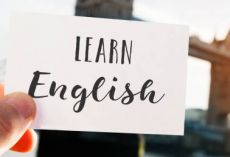430 câu trắc nghiệm Tiếng Anh chuyên ngành Y dược
Chia sẻ hơn 430 câu trắc nghiệm Tiếng Anh chuyên ngành Y dược dành cho các bạn sinh viên Đại học, Cao đẳng chuyên ngành Y khoa có thêm tư liệu học tập, ôn tập chuẩn bị cho kì thi kết thúc học phần sắp diễn ra và từ đó tìm hiểu những kiến thức mới nhất về Y tế. Để việc ôn tập trở nên hiệu quả hơn, các bạn có thể ôn theo từng phần trong bộ câu hỏi này bằng cách trả lời lần lượt các câu hỏi cũng như so sánh đáp và lời giải chi tiết được đưa ra. Sau đó các bạn hãy chọn tạo ra đề ngẫu nhiên để kiểm tra lại kiến thức mình đã ôn tập được nhé!
Chọn hình thức trắc nghiệm (40 câu/30 phút)
Chọn phần
-
Câu 1:
Collections of lymph tissue in the nasopharynx are termed _____________:
A. Paranasal sinues
B. pharynx
C. cilia
D. adenoids
-
Câu 2:
_________ indicate the presence of fluid on the lungs:
A. Crackles
B. Wheezes
C. Pleural rubs
D. Breath sounds
-
Câu 3:
________ is a chemical that speeds up a reaction between sudstances, which helps in the breakdown of complex foods to simpler foods:
A. Glucose
B. Glycogen
C. Insulin
D. Enzyme
-
Câu 4:
_______ is a nodule produced by HPV:
A. Verruca
B. Furuncle
C. Naevus
D. Cicatrix
-
Câu 5:
The sounds of a (n)____ patient’s breathing is also called wheeze:
A. asthma
B. pleurisy
C. pneumonia
D. haemoptysis
-
Câu 6:
Stools are described as loose and bloody. The condition most likely to cause them is ______:
A. Gastric ulcer
B. Cholera
C. Ulcerative colitis
D. Irritable bowel syndrome
-
Câu 7:
Normally at the age of 50, women start get______________:
A. menarche
B. menopause
C. dysmenorrhoea
D. menorrhagia
-
Câu 8:
_______ increases blood sugar:
A. Insulin
B. Cortisol
C. Estradiol
D. Thyroxine
-
Câu 9:
Her father died of a coronary thrombosis. He had______:
A. Heart disease
B. Tuberculosis
C. Dyspnea
D. Leukemia
-
Câu 10:
“Platelet” is another name of “_______”:
A. thrombocyte
B. erythrocyte
C. haemoglobin
D. leucocyte
-
Câu 11:
_______ is a muscular tube extending from the uterus to the exterior of the body:
A. Placenta
B. Ovaries
C. Vagina
D. Cervix
-
Câu 12:
The patient had difficulty starting to pass urine. This symptom is______:
A. Dysuria
B. Urgency
C. Hesitancy
D. Frequency
-
Câu 13:
The condition was ______ because only the surface os the skin was affected:
A. deep
B. painless
C. painful
D. superficial
-
Câu 14:
____ is the medical word for coughing up blood:
A. Dyspnoea
B. heamoptysis
C. Purulent
D. Mucoid
-
Câu 15:
The administration of drugs in gaseoous or vapor form through the nose or mouth:
A. oral administration
B. parenteral administration
C. inhalation
D. topical application
-
Câu 16:
Rebound tenderness is a sign of ______:
A. Cholera
B. ulcerative colitis
C. gastric ulcer
D. peritonitis
-
Câu 17:
The question “ How often do you get your periods ? “ is used to ask about ___:
A. menopause
B. menarche
C. menorrhagia
D. menstrual cycle
-
Câu 18:
The term _____ means dysmenorrhoea:
A. heavy periods
B. menstruation
C. period pains
D. amenorrhea
-
Câu 19:
The doctor asked the patient " take a deep breath in. Don't______:
A. Exhale
B. Inhale
C. Breathe
D. Cough
-
Câu 20:
The two antibiotics worked together anh were therefore ____ in killing the bacteria in Susan’s bloodtream:
A. idiosyncratic
B. generic
C. synergistis
D. tolerant
-
Câu 21:
One of the four stages in medical examination is ____ or feeling with the hands:
A. inspection
B. palpation
C. auscultation
D. percussion
-
Câu 22:
When the patient has black and tarry stool, his condition is______:
A. Gastric ulcer
B. Vesicle
C. Pustule
D. Celiac disease
-
Câu 23:
Thrombocyte or cell that helps blood clot is ____:
A. lymphocyte
B. platelet
C. monocyte
D. erythrocyte
-
Câu 24:
T4 is the abbreviation for hormone _____:
A. thyroid
B. triiodothyronine
C. thyroxine
D. thyrotrophin
-
Câu 25:
A patient who has _____ cough produces phlegm:
A. Loose
B. Non-productive
C. dry
D. typical
-
Câu 26:
______ is a skin lesion that can be seen as dry blood on the surface of the skin:
A. Crust
B. Vesicle
C. Pustule
D. Naevus
-
Câu 27:
..............brings oxygen-poor blood into the heart from the upper parts of the body:
A. Venule
B. Inferior vena cava
C. Superior vena cava
D. Aorta
-
Câu 28:
"Do you hands shake?" The doctor asked about the symptom A_______:
A. Palpitations
B. Palpation
C. Overactivity
D. Tremor
-
Câu 29:
................is an adverse and unwanted affect of a drug or therapy:
A. Caution
B. Side-effect
C. Dose
D. Indication
-
Câu 30:
Which drugs are locally applied on the body surface or the mucous membranes of the body?
A. Pills
B. Tablets
C. Ointments
D. EarosolS
-
Câu 31:
White blood cells are also named...............:
A. erythrocytes
B. thrombocytes
C. leucocytes
D. plasma
-
Câu 32:
The four small gland in the neck whose hormone controls calcium metabolism in the body are the ......................:
A. thyroid
B. thymus
C. parathyroid
D. pituitary
-
Câu 33:
Excision of a kidney is termed.....................:
A. cystectomy
B. cystostomy
C. nephrectomy
D. nephrostomy
-
Câu 34:
The elimiabolic of metabolic waste prducts is called ……….:
A. excretion
B. defecation
C. mictirition
D. contraction
-
Câu 35:
The patient says " I have to pee every half hour or so". His symtom is .....................:
A. urgency
B. hesitancy
C. .frequency
D. urinary incontinence
-
Câu 36:
Thyroxine and triiodothyronine are secreted by .................:
A. thyroid
B. pancreas
C. parathyroid
D. pituitary
-
Câu 37:
When the patient small and hard stools, his condition is ..................:
A. obstructive jaundice
B. irritable bowel syndrome
C. coeliac disease
D. cholera
-
Câu 38:
………may me due to tenderness or anxiety and can be reduced if the patient is persuaded to relax:
A. Rigidity
B. Tenderness
C. Peritontis
D. Guarding
-
Câu 39:
...........................are mycroscopic blood vessels that connect arterioles with venules. Materials are passed between the blood and tissue through the capillary walls:
A. Aorta
B. Pulmonary vein
C. Pulmonary artery
D. Capillaries
-
Câu 40:
The factor ina patient’s cinditionthat prevents use of a particular drug is……….:
A. side effect
B. contraindication
C. antidote
D. indication














